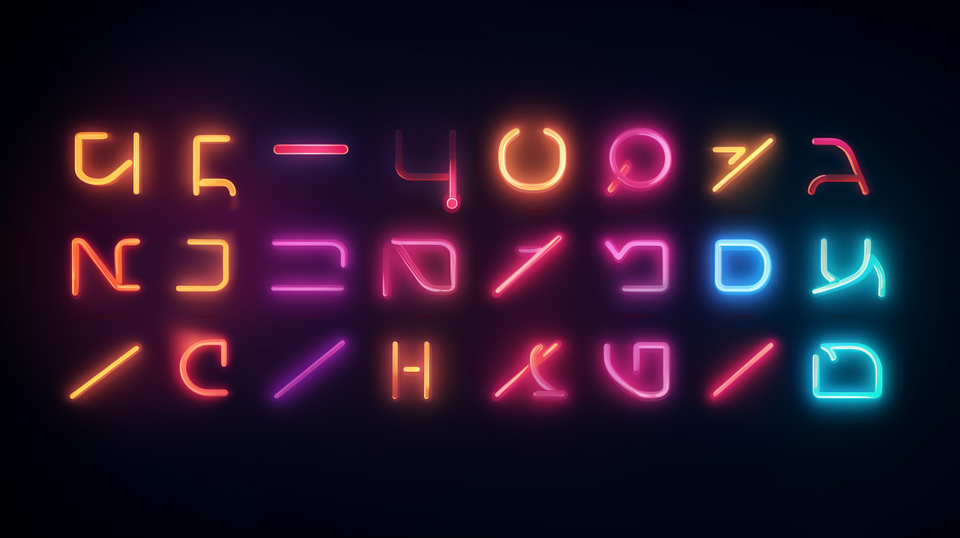Why and How AI Can Help You Build a Cohesive Brand Typography System

"Typography is the visual form of language", noted Ellen Lupton.
In today's digital frontier, artificial intelligence (AI) elevates typography to reflect a brand's vision. The pursuit of a cohesive brand typography system balances consistency with creativity. AI, wielding data-driven insights, serves as a valuable ally, guiding brands along this delicate balance. This post explores the intersection of the tangible and the abstract, examining how AI can help forge a typography system that not only unifies but also encapsulates a brand's core identity.
WHY does it matter?
The fundamental reason for utilizing AI in crafting a cohesive brand typography system is rooted in fostering sustainable business growth. This endeavor not only augments your service delivery to customers, team, and community but also lays a robust foundation for earning customer loyalty and trust. The bridge to trust is paved with strong, consistent branding, with unified typography across channels acting as its cornerstone. Hence, employing AI to scrutinize your existing branding, discern patterns, formulate on-brand typography guidelines, implement a harmonized system, and perpetually optimize it by gauging awareness and loyalty over time, emerges as a prudent strategy.
Top 5 benefits
- Creates True Visual Consistency Across All Brand Touchpoints: Ensuring a unified typography across all brand interactions is paramount for building a strong brand identity. AI excels in analyzing branding data and generating guidelines that promise complete unity in typography implementation, thereby fortifying brand recognition;
- Optimizes Fonts to Maximally Embody Brand Personality: The ability of AI to swiftly create, test, and refine countless font variations allows for a precise alignment of typography with the brand's ethos. This optimization is crucial for conveying the brand's personality seamlessly through typography;
- Adapts Typography as Brand Evolves Over Time: Brands are living entities that evolve, and so should their typography. AI systems continually ingest new data, updating guidelines to ensure the typography remains modern, yet consistent, reflecting the brand's growth and current stance;
- Saves Time and Money: The efficiency of AI in font generation and system building drastically cuts down the time and resources required compared to manual efforts. This cost and time efficiency is a significant advantage, especially in a fast-paced, competitive market;
- Frees Up Designers to Focus on Creativity: By handling the analytical and rule creation aspects, AI allows designers to channel their efforts toward higher-level conceptual work. This freedom to engage in creative experimentation can lead to innovative typography solutions that resonate better with the audience.
HOW
Open ChatGPT or your preferred AI assistant. Enter this prompt:
Objective: As an experienced prompt engineer specialized in branding, creative writing, typography, and design, your task is to develop two distinct typography system sets that emphasize different aspects of {my brand}'s identity. Name each set and provide a brief description of its main characteristics. Present each guide in a table format for easy reference.
About My Brand: {Provide a detailed description of your brand}
Output Guidelines:
Create two different sets of typography guidelines, each with its own unique style, name, and defining characteristics.
For each set, include the following:a. Set Name:
- Assign a name that encapsulates the set's style and focus.b. Brief Description:
- Summarize the set’s defining features and how they align with specific aspects of {my brand}.c. Font Choices:
- List the primary, secondary, and tertiary fonts used in various brand applications.d. Font Types & Sizes:
- Specify the font types and sizes for titles, sub-titles, body text, captions, and quotes.e. Usage Scenarios:
- Indicate when and where each typeface should be used (e.g., headlines, body text, captions).f. Line Spacing:
- Define optimal line spacing for readability and aesthetic appeal.g. Text Hierarchy:
- Describe the text hierarchy system, including how to differentiate headings, sub-headings, body text, and quotes.h. Kerning:
- Provide guidelines on kerning adjustments for different typefaces and contexts.i. Color and Contrast:
- Outline the colors to be used for text and background to maintain sufficient contrast, adhering to accessibility standards.j. Special Characters & Icons:
- List any special characters or icons that are part of the typography system.
Present this information for each set in a separate tabular format, ensuring each category is clearly delineated.
Conclude with an overall analysis that ties the typography choices back to {my brand}'s core identity and objectives, discussing the rationale for creating two distinct sets.
Note: Ensure each typography system is both functional and aesthetically aligned with the specific aspect of your brand it aims to emphasize, enabling a cohesive and engaging brand experience.
TIPS
#01. Make sure you include the following information when describing your brand
1. Detail your brand values: Core principles guiding your brand;
2. Brand Personality: Human traits associated with your brand;
3. Product/Service Description: What your brand offers;
4. Target Audience: Details of your consumers;
5. Unique Selling Proposition: What sets your brand apart.
#02. Use the same prompt with different AI assistants. Benefits
1. Diverse Perspectives: Different training data in each model leads to varied interpretations and more idea generation;
2. Accuracy Enhancement: Multiple models can help identify and correct potential biases or errors;
3. Comprehensive Analysis: Each model may emphasize different aspects of the prompt for a well-rounded review;
4. Cross-verification: Similar results across models can increase confidence in output accuracy;
5. Language Adaptation: Translating the prompt into different languages can provide new insights and refine meaning.
Conclusion
Unifying typography is both a science and an art. The science of data, patterns, and logic builds a sturdy branding foundation. The art of style and creativity breathes life into sterile systems. AI deftly balances the two, providing the structured insights to craft typography guidelines rooted in reason, and then granting designers the freedom to sprinkle in that secret sauce called soul.
BOOK
"Thinking with Type" by Ellen Lupton is a quintessential guide that seamlessly navigates through the basics to advanced typography concepts. It's a treasure for a broad audience including designers, writers, and anyone in design-centric businesses. The book bridges traditional typography with modern practices, essential for those blending classic with contemporary aesthetics. It unfolds the art of typeface construction, offering invaluable insights for graphic designers and brand strategists aiming for effective communication through type. A well-structured educational voyage into typography awaits here on Amazon, ideal for those keen on enhancing their branding and design prowess. 👇🏼


Fusing art, design and AI to craft visionary brands.
Bridging art and innovation across illustrations, fashion, murals, tattoos and multimedia - I constantly redefine my creative frontiers.
Leveraging leading-edge AI, I create singular brand identities and strategic narratives—redefining visual experiences.
Follow me, and let`s connect ☞ https://bit.ly/linkmarcel
Questions? Reach Out via Email 📬
Keep learning, creating, and enjoy the journey!